Yes, of course. Not only will skateboarding work most of your core muscles and increase your strength, it can also help shred off those extra pounds you’ve been trying to get rid of all these years. One hour of skateboarding can make you burn around 400-800 calories.
Skateboarding also helps improve your balance, agility, and fitness. It is considered a complete cardio workout that you can integrate in your exercise routine.
Not only that, skateboarding can also help to lift your mood and teach important lessons that’ll come in handy down the road. All things considered, skateboarding is a great exercise, both physically and mentally.
Table of Contents
What Makes Skateboarding a Good Exercise?
Improves cardiovascular stamina
Skateboarding is a fun way to build and increase your cardiovascular stamina. Many skateboard tricks require you to crouch, transit from crouching to standing, and jump. All these postures and actions can help boost your cardiovascular system.
Simply riding a skateboard on a ramp will require a lot of effort from you and that will ultimately build your cardiovascular stamina over time.
Keeps you excited
Apart from the direct physical advantages, skateboarding can help you improve your mental health on multiple levels as well. The thrill you get from every ride is almost always pleasant.
People usually join forums or communities to find like-minded people. That way, you can build and grow a community yourself, which in turn, increases the chance of you getting connected and feeling good.
Relieves stress
Skateboarding also helps you to relieve your stress. It is a form of constant exercise, which helps to release “endorphins” inside your body. I’m sure you can also relate to the adrenalin rush you get from performing a trick.
All these hormones released into your bloodstream will make you calm, relaxed, and stress-free. The increase of these hormones due to increased physical activities (like running or skating) is called a “runner’s high.”
Makes you creative
Skateboarding can actually help you become more assertive and come up with new ideas. You become able to find your way in tight situations and learn to use the environment to your advantage.
Besides, once you become familiar with the basic tricks, you’re free to develop your own style/tricks. Many of today’s famous tricks were developed by freestyling skateboarders.
Helps achieve persistence
The most important skill skateboarding can teach you is persistence. Balancing yourself over a moving object is hard and it’s even harder when cruising at high speeds. Every kind of trick and move used in skateboarding needs multiple, repetitive efforts.
If you want to master skateboarding, you need to learn how to be persistent that might be helpful in the later stages of your life.
Improves body coordination
Skateboarding not only makes your body more flexible but also improves your reaction time and body coordination. With skateboarding you’ll need to make quick decisions and move your body accordingly.
Skateboarding will also help you improve your balance. With a flexible body, quick reflex, and improved balance, your overall fitness will increase significantly.
Makes muscles stronger
Skateboarding is a complete workout by itself. It forces your muscles to grow and joints to be flexible. As a result, practicing and performing tricks becomes easier and more natural over time. You can even get abs through skateboarding and no, I’m not kidding.
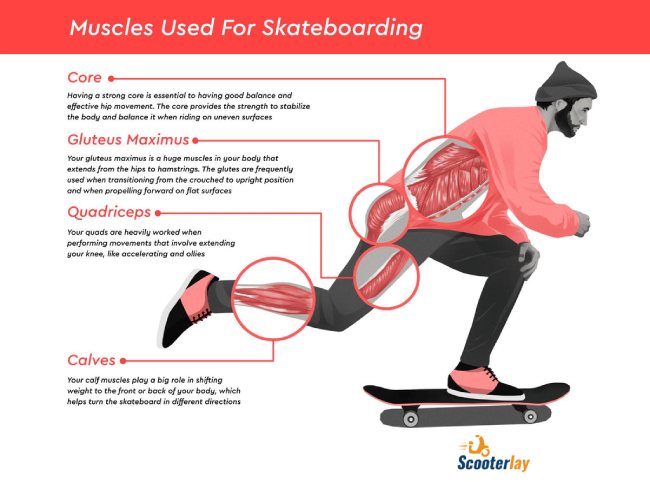
Vigorous sports like skateboarding can work a wide range of muscle groups like the hip, spine, gluteus maximus, quadriceps, hamstrings, and lower legs.
Makes your legs do more
Your leg muscles will become significantly stronger since your joints become more agile and the hips more flexible. The improved legs will be better able to carry the body, reducing the strain and pain in your lower back.
Skateboarding will also increase your overall stamina. With stronger legs and improved stamina, you’ll be on top of your games a lot more than you are now.
Teaches you to fall properly
This perhaps is the most important skill skateboarding can teach you. Most of our brains aren’t wired to fall properly. We tend to land on our hands to protect our heads by default. That isn’t always the best way to deal with fall damage.
With skateboarding, you’ll learn to fall properly face down. That way, you’ll minimize the chance of visiting your local ER with a major injury.
Improves your pain tolerance
If you start skateboarding, you’ll definitely get hurt at some point. The whole concept of skateboarding stands on a trial and error basis. The more you make small errors, the faster you improve.
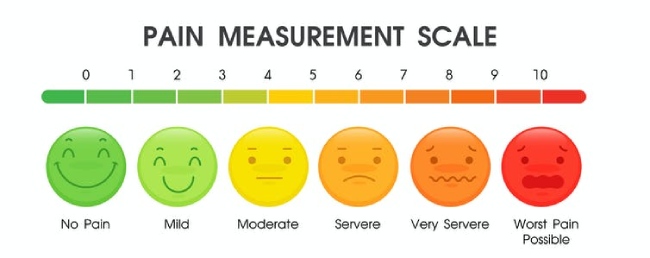
Skateboarding can improve your pain tolerance level over time. It also improves your mental tolerance AKA patience and persistence. You’ll turn out to be strong both physically and mentally once you start skateboarding.
Which Parts of Your Body Get Involved?
Abs
The balancing part helps with your abs. Skateboarding makes all your lower back and front muscles work in harmony with the spine. Which, in turn, can help you lose excess belly fat and develop abs over time.
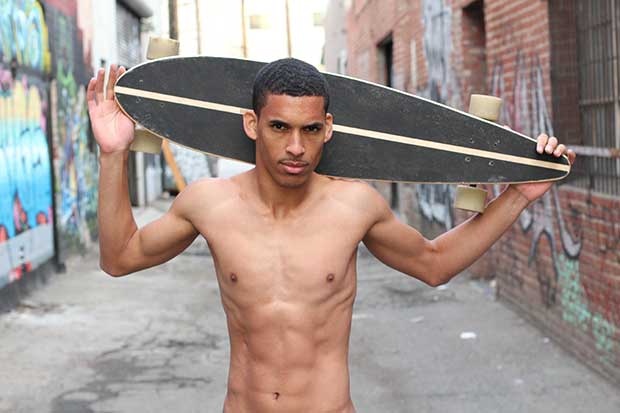
The active lifestyle of a skateboarder also helps in this aspect. One hour of skateboarding can help you shed 500 calories on average.
Arms and shoulders
Skateboarding can also help with the muscle growth in your arms and shoulders. Arms and shoulder movement will dictate which direction your board will go next. Even if your arm and shoulder don’t get as intense workout as your legs, something is better than nothing.
However, you need to keep in mind that everybody prefers one foot over the other to stay on the board. Once you become familiar, the wisest option will be to use both legs equally.
Core muscles
Your abdominal muscles and lower back will get the most out of your skateboarding session. During skateboarding, you’ll need to keep your body in a lunge/squatting position. In this position, your core will act as a pivot point.
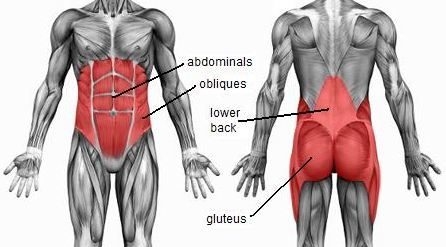
With continuous practice, your core muscles will grow and provide better support in carrying your weight around. This can improve your back pain.
Hamstrings
The lunge/squatting posture you take when you skateboard also works on the glutes, hamstrings & calves of your forward leg, the leg you use for balancing.
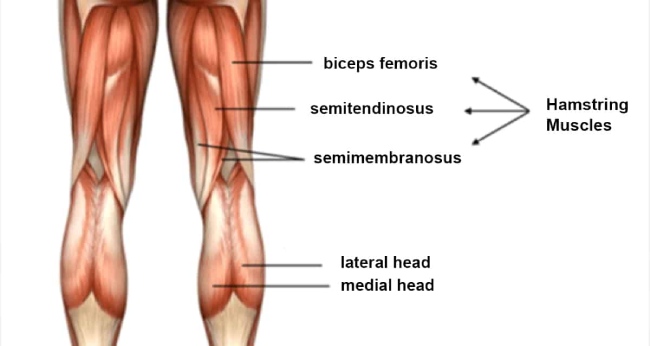
Despite what many people believe, skateboarding works your glutes, hamstrings & calves just as effectively as doing your gym lunges, if not more. Consistent practice will help you get healthy while having fun.
Skateboarding: Is It All Sunshine and Rainbows?
Obviously not. Like any other sport, there are risk-factors to consider. Let’s take a look at the possible injuries.
Head injury
The most dangerous injury you can fall into while skateboarding. Skateboarding is a lot faster than walking. It’s hard to stay in control at such high speeds. Even if the number is small, most head injuries can turn worse.
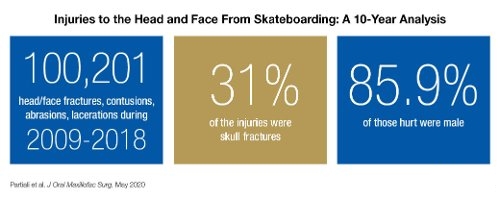
Make sure you and your loved one properly wears a helmet as they skate. Even if the helmet may feel a little sweaty and uncomfortable, it may actually shield you from a fatal injury.
Injury from collision
Any kind of sport that involves speed also includes collision. In case you skateboard over busy streets, you may end up colliding with pedestrians or worse, vehicles. That’s why we recommend you to avoid crowded places altogether.
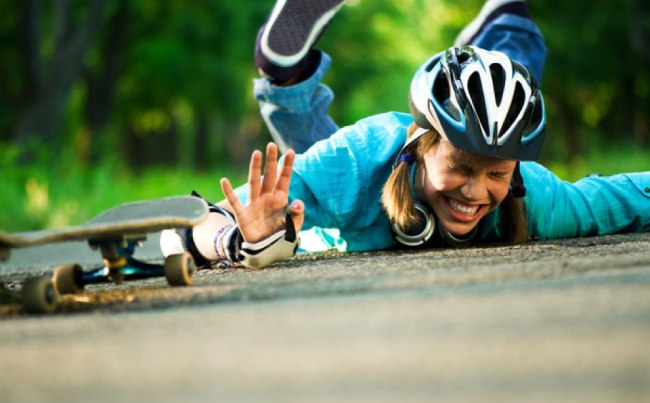
Do not use headphones while you skate as it can clog your attention in crucial moments. Keep an eye on your surroundings and try to grasp how fast you’re moving.
Fractures
Falling off the board is fairly common for beginners. This is one of the most common reasons your hand, legs or wrists may get fractured; especially if you don’t know how to fall properly.

Using safety gear and learning how to fall face down without taking much damage will help you stay out of the dangers that come with collisions.
Slipping
Not all conditions are optimum for skateboarding. Rough terrain and wet weather/surface are two of the main conditions where this otherwise cool sport may get dangerous.
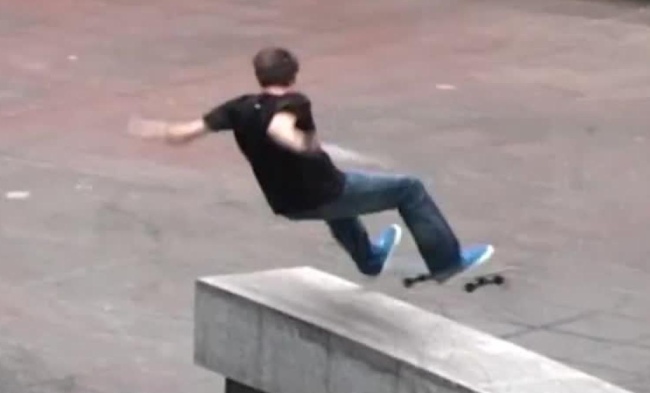
Avoid skating in the dark, wet, or rough terrain. Don’t drink and skate. Don’t push yourself too far. These instructions will help you stay out of trouble.
Injuries when doing tricks
Some tricks are harder to master whereas some others are downright dangerous. Knowing your limits can . Tricks like skitching and two people sharing one board should be always avoided.
If you want to learn and practice new tricks, go to a skatepark where emergency help is available. Learning tricks take time and there’s no shortcut to success.
How to Exercise With a Skateboard
That depends entirely on what your goal is. The exercise to shake a few extra pounds off won’t be the same as increasing leg muscles. Skating in general is a good workout. Here are some exercises that can help you achieve overall success in exercising.
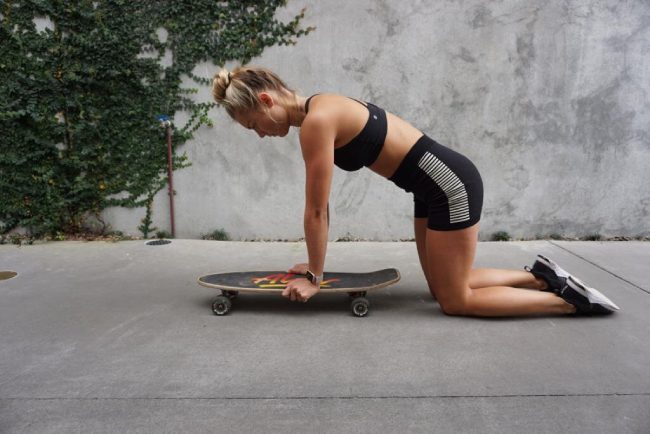
The warm up
You need your muscles to be relaxed and the blood to be well-circulated throughout your body. Jogging around for 3-4 minutes or some star jumps will get your body going.
Loosening your muscles
Forward Lunge & Lat reach
Start from a standing position and slowly lunge forward with your preferred leg. Make sure the knee doesn’t go beyond the ball of your foot.
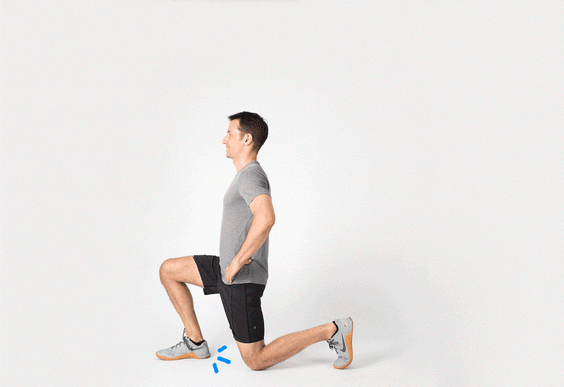
Now, push your left hip forward and hold for 5-10 seconds, put your hands above your head and lean to the opposing side. Travel around 10 meters like this and after that, turn around and repeat back to the starting position.
Bear crawl
Crouch down. Keep your hands in front of you and your feet behind. They should be shoulder-width apart from each other. Set your hips up in the air, and keep your eyes forward.
Crawl forward using your right hand and left foot. Then switch to your right foot and left hand. Crawl like this for 10 meters.
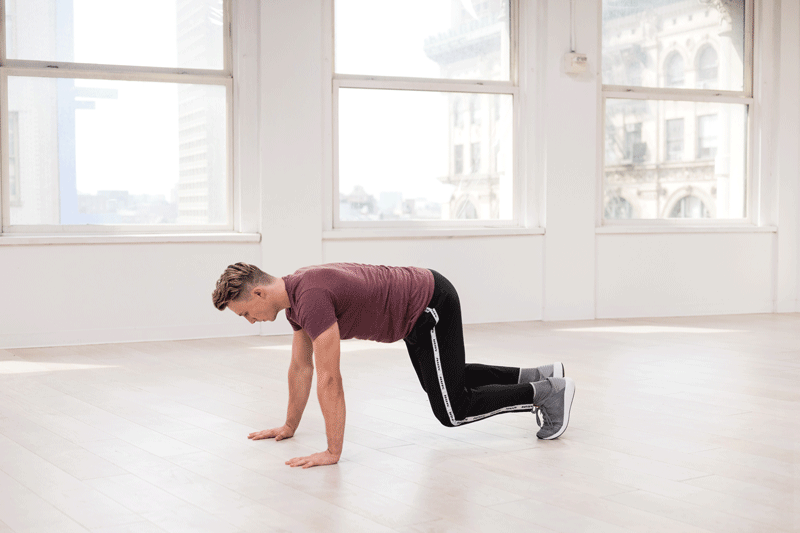
Once done, turn around and return to the starting position the same way.
Duck walk
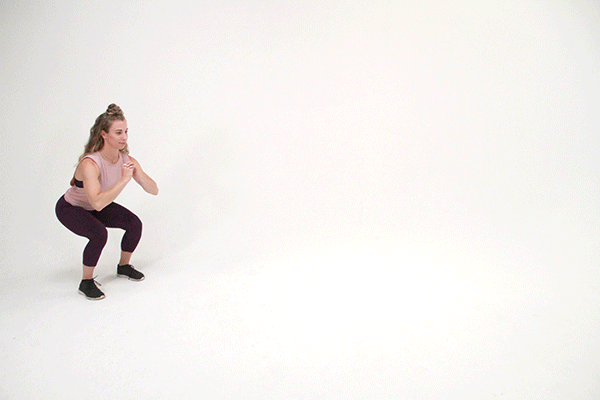
No, you don’t need to turn yourself into a duck for this. Stand straight and keep your feet at shoulder width apart. Get into a half squat position by sitting your hips back and bending your knees.
Once ready, clasp your hands in front of your chest and slowly walk forward 10m. Don’t forget to keep your chest up and return to the starting position the same way.
The workout
Box jumps
Find a box or a park bench, squat back to propel your body up to the box, and start jumping as high as possible.
The main idea is to use the box/bench as a landing pad. Try to land softly, hop down and repeat the process for about 4 sets of 10 reps.
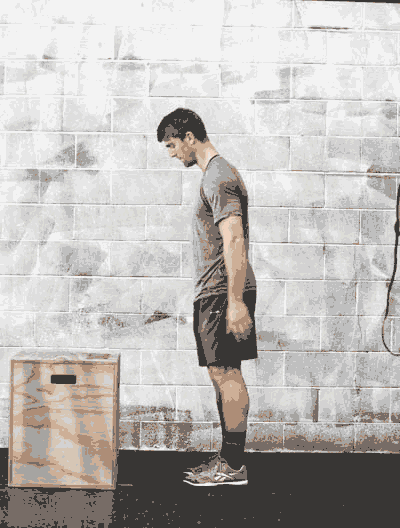
Lateral skater jumps
Now practice jumping over some kind of obstacles. You can use a small hurdle or lines on the floor that are 2-3 feet apart.
Raise your inside leg, and start by pushing off your outside leg over the obstacle. Do this for about 4 sets containing 30 seconds each.
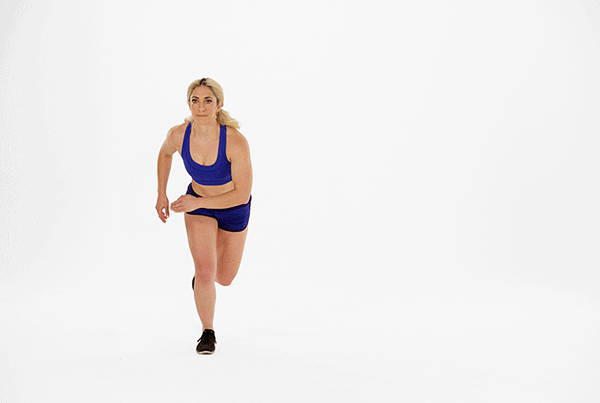
Single leg lateral hurdle hops
Stand upright and place a small obstacle on one side of your body. Lift up your left foot, band the knee cap forward, and keep your back straight.
Start jumping off your right foot and land on the other side of the hurdle. Swing your arms for better control.
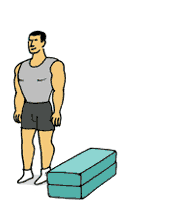
Each set should be 30 seconds and you’ll need to perform 2-3 sets regularly.
Skipping rope work
Jump over skipping ropes. Start with two legs down and work your way up to a single leg. You can also try jiggling in place once you’re more familiar with the style. Three 30-second sets will be enough.
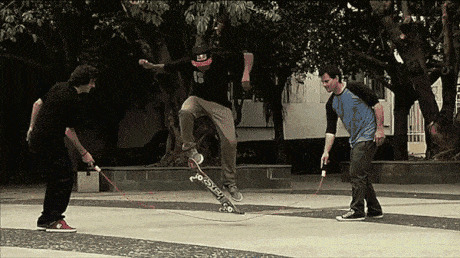
Push up hop from knees
Unlike regular pushups, you’ll need to keep your legs bent and hands under your shoulders. Try to do push ups from your knees as quickly as possible. 3 sets of 10 reps will be adequate for the session.
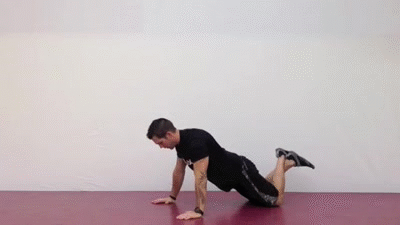
Standing heel raise
Last but not least, we have standing heel rise. stand on a flat surface, beside a hand support, and keep your feet shoulder width apart.
Keep your toes straight forward. Now, gently raise up onto your toes, hold this position for 2-3 seconds, and then return back slowly.
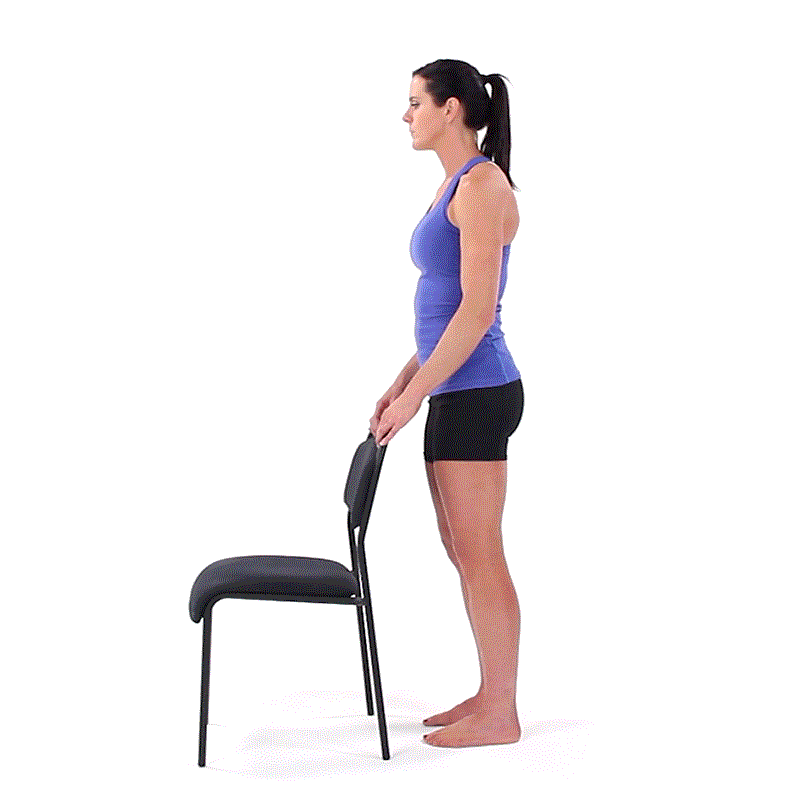
Do 3 sets of 10 reps for each foot.
How to Lose Belly Fat From Skateboarding
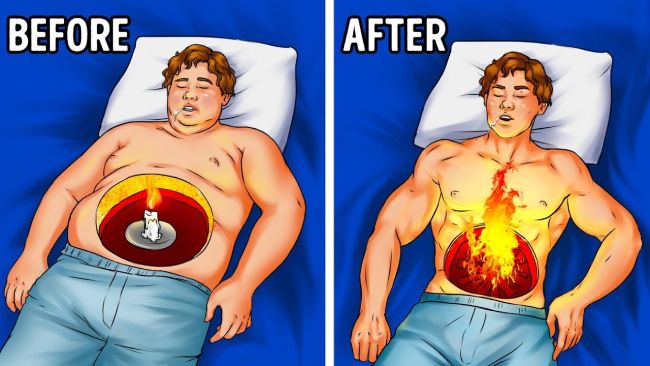
Ride less and do tricks more
Even if plain riding will help you lose the extra pounds from your belly, the tricks and stunts will burn your fat at an even higher rate. If slimming down your tummy is the only goal, focus more on learning and performing a wide variation of tricks.
Use hard wheels
Hard wheels are harder to master. You’ll need a bit more agility and mindfulness to get used to the hard wheels. However, they can help you lose a few extra pounds faster than softer wheels.
Exercise with freestyle boards
Freestyle boards are open to interpretation however you see fit. That’s why freestyle boards perform better than the purpose built ones. Instead of focusing on any special subcategory, try to perform as many tricks as possible.
The more you move, the faster the fat will burn.
Avoid longboards
Longboards are specially designed for cruising around, and cruising can’t burn fat as quickly as performing tricks. That’s why we recommend you to avoid longboards.
No matter what tool you use; the harder you perform, the quicker you’ll be able to burn your belly fat.
Best skateboarding schedule for weight loss
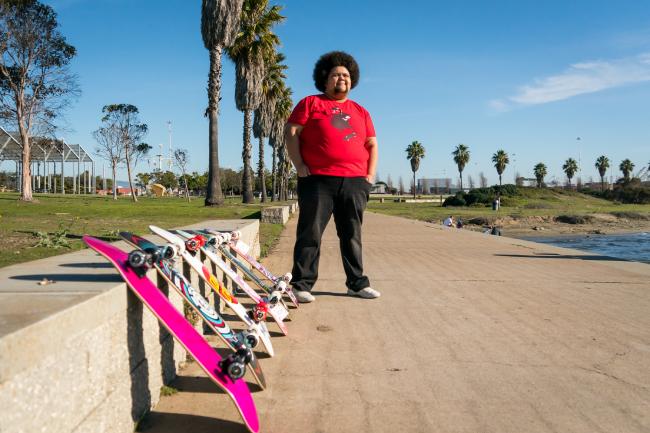
Build up the time slowly
This might be true that, you can burn about 500-800 calories with skateboarding, it doesn’t happen overnight. Just like many other improvements, losing weight also takes time and persistence.
Start with baby steps and work your way up the ladder over weeks. You’ll be surprised at how much you can achieve just by moving one step forward at a time.
Don’t burn yourself out
The goal is to burn your fatty tissues, not your existence. Take it easy and know your limits. Overworking almost always ends up in fatigue. Start with small steps and gradually work your way up for a more sustainable fitness.
Take breaks to recover
Like any other parts of our body, the muscles also need to rest to recover. Give your body proper time to rest and heal.
Relax your muscles with massages and hot water. Don’t forget; persistence is the key here, not intensity.
FAQs
1. How many calories can I burn from skateboarding?
Ans: Usually, around 400-500 calories per hour. The amount of calories you burn will depend on your body weight and the intensity of the session. If you skate aggressively, you can even burn around 800 calories in just an hour.
2. Is skateboarding better than walking?
Ans: Yes, skateboarding works more muscles in your body than just walking. That’s why a small amount of skating outperforms walking over the same period.
The aerobatic activities you can perform as a skater also work your core muscles, which is hard to gain through just walking.
3. Is skateboarding a budget-friendly exercise?
Ans: Yes. You can get your hand on an entry-level skateboard with around $50-60 and that’s all you’ll need. There are very little additional costs related to skateboarding, making it a budget-friendly exercise.

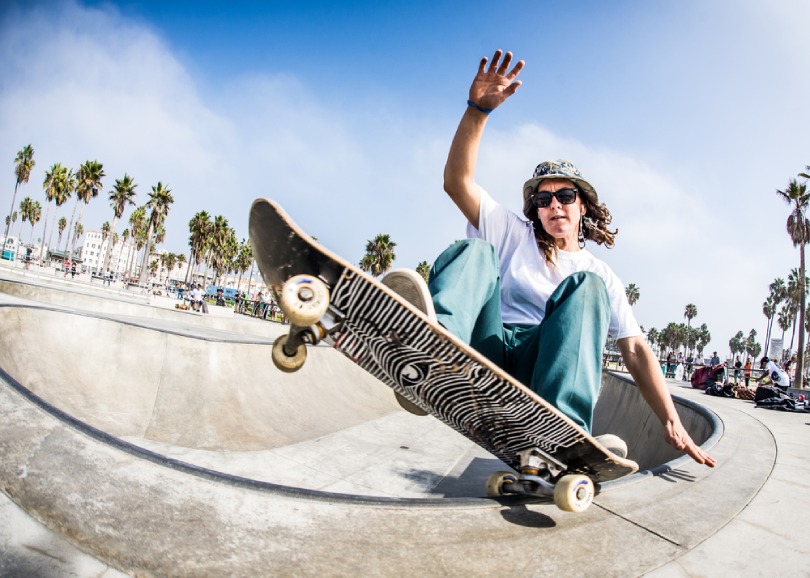
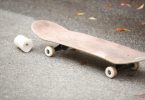
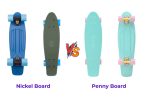
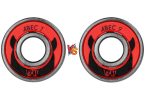
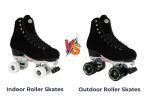
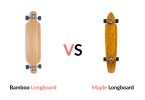


Leave a Comment